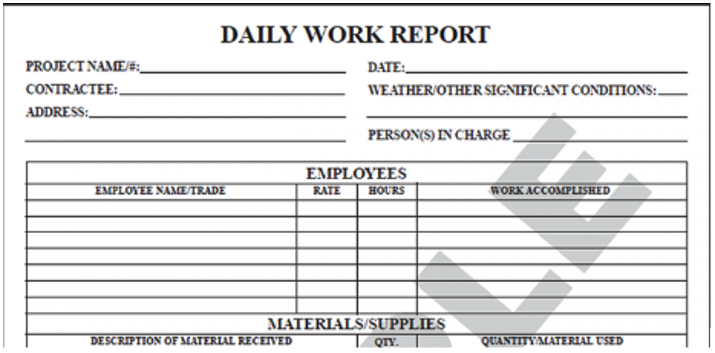
Why Companies Should Prioritize the Digitalization of Contractor Management Processes

Introduction
In today’s rapidly evolving industrial landscape, companies are increasingly relying on a diverse network of contractors to manage complex projects and maintain critical infrastructure.
However, the traditional methods of managing these contractors, which often rely on manual processes and outdated systems, are no longer sufficient to keep pace with the demands of modern industry.
Time entries, service sheets, billing documents, and assignment tracking, and critical reporting are most often done manually in excel spreadsheets, access databases, and pdfs shared through email.
The need for efficiency, visibility, and compliance in contractor management has never been greater, making the digitalization of contractor management processes not just a strategic advantage but a necessity. In this blog, we will explore why digitalizing contractor management should be a top priority for companies looking to stay competitive in the face of growing operational challenges.

Contractor Management is Growing More Complex
As contractor-heavy industries continue to expand, the complexity of contractor management has grown exponentially. Companies in industries like chemicals, oil and gas, utilities, and manufacturing are increasingly reliant on a vast array of contractors, each bringing specialized skills and expertise to various maintenance and growth-focused projects.
This diversification, while beneficial, presents significant challenges in managing multiple contractors across different locations, timelines, and regulatory environments. The more traditional manual approaches to contractor management, such as paper-based records and manual time tracking, are proving wholly inadequate as companies are continuing to drive forward with expansion goals.
In fact, these outdated methods often lead to inefficiencies, miscommunication, and compliance risks. Digitalization of contractor management processes, on the other hand, offer a streamlined approach to mitigate these challenges by enabling companies to manage contractor relationships more effectively. Digitalization can also ensure that all aspects of the large volume of contractor engagements are transparent, coordinated, and compliant.
The Case for Digitalization: Enhancing Efficiency and Productivity
Digitalizing contractor management processes significantly enhances efficiency and productivity, transforming how contractor-heavy companies operate. One of the primary benefits is the automation of workflows that were previously bogged down by manual intervention. Tasks such as contractor onboarding, document verification and tracking, time management, and invoicing can be seamlessly managed through digital platforms, drastically reducing the time and effort required by manual approaches to these things.
Automation not only speeds up administrative processes but also minimizes the risk of human error, ensuring that contractors are approved and ready to work without unnecessary delays.

In addition to automation, digital tools provide real-time monitoring and reporting capabilities, which are invaluable for project managers and executives. With instant access to up-to-date information on contractor activities, project timelines, and resource allocation, decision-makers can quickly identify potential bottlenecks and make informed adjustments to keep projects on track. This level of visibility into contractor performance not only improves overall project efficiency but also enables more accurate forecasting and resource management, ultimately leading to better outcomes and a more agile organization.
One real-world example where we see digitalization efficiencies is in the creation of L.E.M (Labor, Equipment, and Material) reports that are often built and reviewed daily by construction teams. Without a digital solution to pull data from, the L.E.M. reports can be time-consuming to put together. They often also contain human errors that skew the overall picture given that many of these reports are put together by tired employees at the end of the day before they get to go home.

Digitalization of contractor processes means the critical L.E.M. reports can be created in a fraction of the time and with little effort, meaning the associated costs of running this report are also drastically reduced.
Digitalization Can Improve Safety and Compliance
In contractor-heavy industries, safety and compliance are paramount. The consequences of non-compliance or safety lapses can be severe, ranging from financial penalties to catastrophic accidents that get the company shut down. Digital tools play a crucial role in mitigating these risks by ensuring that all contractors meet the necessary regulatory requirements and adhere to safety protocols. Through digital platforms, companies can maintain up-to-date records of contractor qualifications, certifications, training, and working arrangements, ensuring that only qualified personnel are allowed on-site for the contracted timeframe.
Cost Savings and ROI From Contractor Digitalization
The digitalization of contractor management processes can lead to significant cost savings and a strong return on investment (ROI) for companies that engage with a large volume of contractors.
By reducing reliance on manual processes, companies can lower operational costs associated with administrative tasks, such as data entry, time and exception tracking, document handling, and compliance management. Digital tools also help minimize errors and delays, which can result in costly project overruns or contractual disputes. In fact, many companies in the chemicals, oil & gas, utilities, and manufacturing industries are often unaware of just how much money is going into the support and administration of manual contractor processes. As an example, companies that have implemented AES/32 as their contractor management software see an average of 15% savings in the first year, with additional savings accrued over longer terms.
Furthermore, better contractor management contributes to maximizing asset utilization. When contractors are managed efficiently, projects are completed on time, and assets are maintained and operated more effectively. This not only extends the lifecycle of critical assets but also enhances overall profitability.
Companies that invest in digital contractor management systems are better positioned to optimize their operations, reduce waste, and achieve greater financial sustainability while staying competitive in the long run.

Future Trends and the Role of Technology
It is important to note that the digitalization of contractor management processes is not a one-time effort but an ongoing evolution. Emerging technologies such as artificial intelligence (AI), the Internet of Things (IoT), and blockchain hold the potential to further enhance contractor management in contractor-heavy industries:
- AI, for instance, can be used to analyze contractor performance data and predict potential risks or delays, allowing for proactive management.
- IoT devices can provide real-time data on contractor activities, enabling more precise monitoring and control.
Blockchain technology could offer enhanced security and transparency in contractor transactions, ensuring that all parties have access to a single, immutable record of contract terms, compliance status, and payment milestones.
As these technologies continue to develop, companies that have already digitalized their contractor management processes will be better positioned to integrate and leverage these innovations, staying ahead of the curve in a competitive market. But, even without these innovations a simple digital solution for contractor management can drastically change how companies operate with their contractors, especially for companies that have the majority of their contractor processes being handled in a manual way.
Conclusion
The digitalization of contractor management processes is no longer optional for asset-intensive companies; it is a strategic imperative.
By embracing digital tools, companies can enhance efficiency, improve safety and compliance, reduce costs, and achieve a higher return on investment. As the contractor-heavy landscape continues to evolve, those who prioritize digital transformation will be better equipped to navigate the complexities of contractor management and maintain a competitive edge.
Now is the time for companies to assess their current contractor management practices and take the necessary steps to digitalize, ensuring long-term success in an increasingly digital world.
About NHD
For over 30 years, NHD has been providing an intelligent, all-in-one solution that bridges the gap between your company and your external workforce in the full source-to-pay cycle.
- Integrated communication processes with suppliers; from demand to payment
- Full worker profile visibility and management including certification and documentation tracking
- Quotation process supported by approved unit rate catalogues
- Effective time management with integration into gate systems
- Provides 100% contract compliance through standardized catalogues
- Dynamic auditing for process and rate compliance
- In-depth reporting and analytics for fatigue management, earned value management, contractor/site performance, and more
- Seamlessly integrates with SAP ERP/S4/Hana and more
Tired Of The Lack Of Transparency In Your External Spend?
Keep your business running smoothly with transparent labour and service procurement.
Simplify all tasks related to the management of the external workforce.
What Our Customers Say
Fully integrating and digitalizing Contractor Management is no easy task – but AES/32 has proven to be worth it in the short time it’s been in use. The dashboard view of work completed and payments due shows what’s on track and bottlenecks for intervention. Returns will multiply significantly as we scale up the number of contractors over time across multiple sites.



